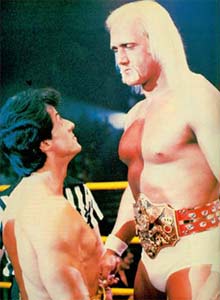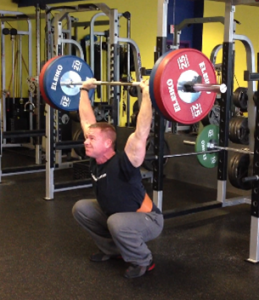I grew up in the 80s.
What I mean by that is that the core years of my adolescence occurred in the 80s. In 1985, I was a freshman in high school. One of the things that I believe was particularly unique about this time in our American popular culture was the social pressure put on boys of my age to lift weights. Popular films of the time starred action heroes such as Sylvester Stallone and Arnold Schwarzenegger. Back then, these men were viewed, somewhat, as pinnacles of masculinity. I believe a whole generation of young men were directly influenced in a very powerful way by characters like Rocky, Rambo, Conan The Barbarian, and The Terminator. I know I was. And so were my friends.
Almost every guy I knew lifted weights back then.

Many of the workouts performed by my friends and I were, initially, virtual imitations of the workouts we saw performed in the Rocky movies. We jumped rope. Every day. We hit the speed bag as a warm-up to virtually every workout. And, of course, we lifted weights, nearly every day, always trying to out do each other. An unfortunate aspect of this time, I believe now, was the irrational emphasis put on chest and arm development. Looking at the chest of Arnold Schwarzenegger in The Terminator and the 20-something-inch “guns” of 80s personalities such as Hulk Hogan, I’m sure you can understand where the basis of this emphasis came from.

Unfortunately, for a generation of young men who also put high value on their ability to perform in various sports, excessive chest and arm training was, at best, irrelevant, and was, at worse, compromising athletic performance. It has taken me significant time to “get over” the idea of weight training being about building “respectable” chest and arms. Some of the deprogramming was difficult to accept, but my training, of myself and others, has continued to evolve in a better, more productive, direction.
Looking at chest and arms, and let’s throw shoulders (deltoids) in there too, one can easily see that we are talking about only about one third of the body’s total muscle mass. The vast majority of the body’s muscle mass, about two thirds (about 67%), lies in the quads, hams, glutes, and back. Assuming you are looking for balanced development, your weight training programs should reflect those percentages. Ideally, one would be spending two thirds of his/her time in the gym training quads, hams, glutes, and back. My training, until about 15 years ago, was about two thirds chest, shoulders, and arms training. I suspect many of the men I grew up with would also be inclined to design their weight training program with this somewhat irrational emphasis on chest and arms.
Fifteen years ago (in 2003), I started putting more appropriate emphasis on each muscle group. Instead on doing some sort of upper body work every 3 days out of 4, I began having about 50% my workout time dominated by lower body, performing a squat type movement as often as every 3 days. Squatting every 3 days?!? Many men in my peer group would call this crazy. I call it extremely productive and effective. Personally, my physique, performance, and health all responded in a very positive way after making this physical, and philosophical, adjustment.

Almost 6 years ago (in late 2012, I modified my program design, designating the Olympic Snatch as a “centerpiece” lift. I discovered that building the exercises that improve the Olympic Snatch can dramatically increase your flexibility, mobility, and overall physical prowess in a very real, “feel-able” way. Because this type of training is more comprehensive in a real-world, functional sense, you immediately start noticing that you can perform better physically, in your day-to-day living, in ways that are truly remarkable. Lifts like front squats, dead-lifts, high pulls, squat cleans, snatch from the hip, snatch pulls, dip snatch, overhead squats, and slide and drag drills are much more translatable to your everyday living and general physical performance levels than the bench press and barbell curl. I have integrated these concepts into my personal training methods as well – the results have been spectacular.
It is this natural evolution of my program design that has led to the development of Trilateral Training.
Paul Newt has been privately instructing and strength coaching since 1994. He is the founding President of Edge 24 Hour Private Fitness and Master Trainer at New Energy and Weight-loss Training Systems.
IF YOU ENJOYED READING THIS ARTICLE, you may also enjoy reading An Interdisciplinary Approach to Weightlifting Part I by the same author.




